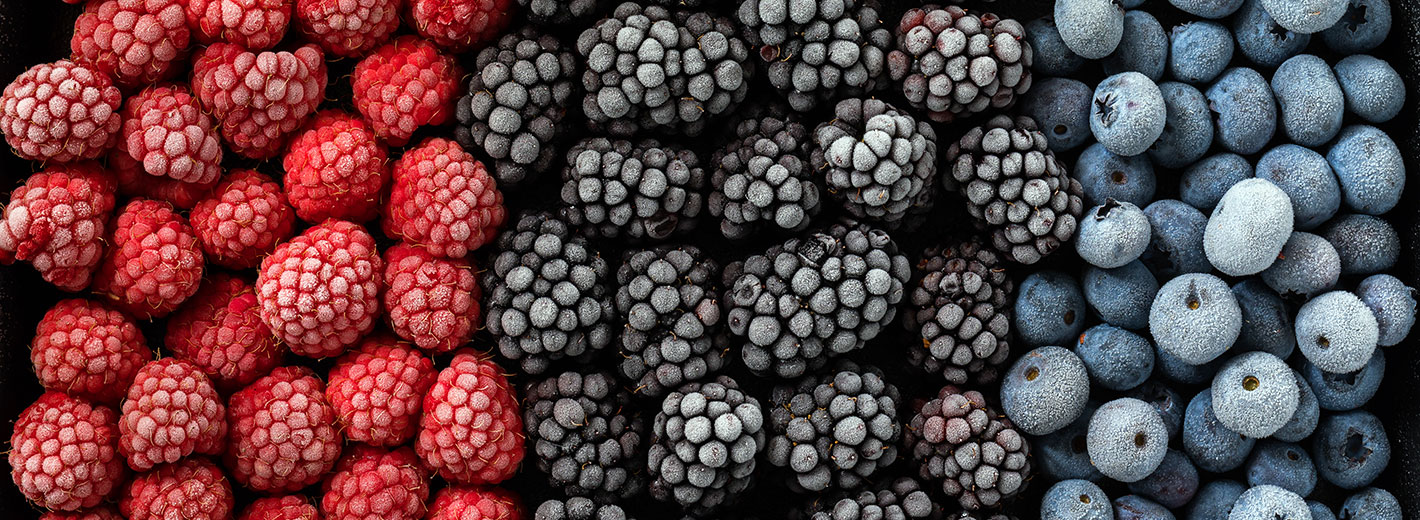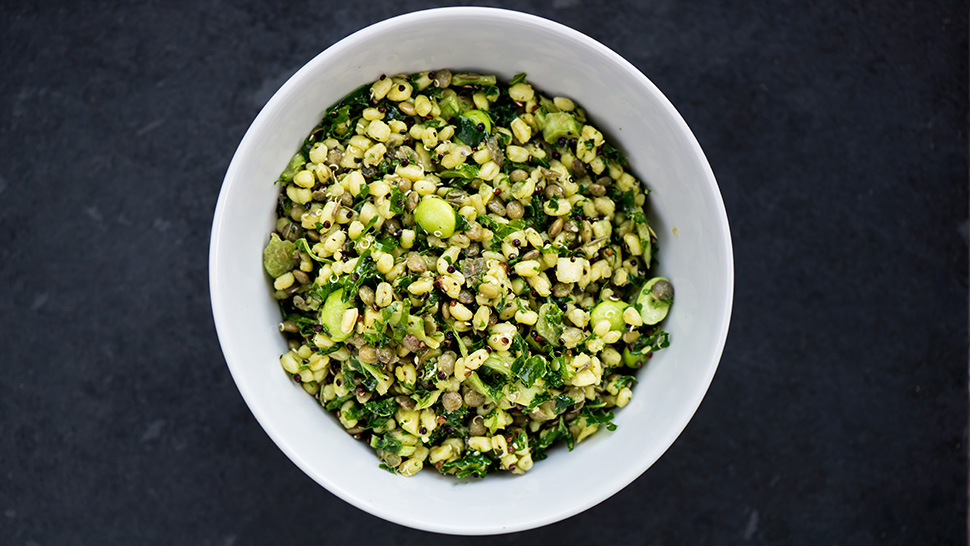
Let’s Cook: Pro Tips for Waste Warriors Plus a Warm Quinoa Salad with Walnuts, Edamame, and Tarragon
- by bonappetit
These days most of us are trying to minimize the number of times we shop by making every shopping run a very targeted one. We want our fresh produce and pantry staples to last as long as possible, and we want creative new ways to use them. Don’t worry, we’ve got you.
Below are a few pro tips to help keep your fresh food happy for as long as possible, adapted from Dana Gunders’ indispensable Waste Free Kitchen Handbook and the related website www.savethefood.com. In a few weeks, just when you’re thinking the pantry is getting bare, you can whip up the protein-packed warm walnut quinoa salad with edamame and tarragon at the bottom of this post. All the ingredients store well in the pantry, fridge, or freezer. And although it calls for tarragon, you can use whatever herbs you want, like that basil you’re about to store in a vase on your counter. Fresh food that doubles as home decor, who could ask for more?
Berries hate baths. Until they’re ready to be eaten, of course. Then (please) wash away! They also like to breathe, so store them loosely covered in a single layer on a tray lined with a dry cloth or paper towel. (For strawberries, keep on their jaunty green caps.) To freeze: Rinse, dry, if strawberries, remove caps, freeze on a tray lined with parchment paper, and then pack into airtight containers.
Basil likes to be the center of attention. Store it like you would a bouquet of flowers: Trim the stems and place cut ends down in a jar of water on the counter. For extra protection, loosely cover with a plastic bag and change the water daily as you pluck leaves from it. The longer since it was picked, the more bitter it will be, so keep that in mind when you’re grinding up a batch of pesto. This technique works well for mint, too.
Other herbs are shy. So store them loosely wrapped in cloth in a breathable bag in the high-humidity drawer of the fridge. If you’ve gone overboard on your herb purchases or backyard garden and want to save them for a much later date, consider freezing them in ice cube trays.
Nuts and flour love to chill. Or really just hang out in any cold space. Shell-free almonds, walnuts, pecans, and pistachios will last in the refrigerator for up to two years, and in the freezer for two years or more. Did you buy an extra bag of flour for shelter-in-place baking projects? (We know you did.) Storing it in the refrigerator or freezer can double its longevity. Just be sure to keep it in an airtight container so it doesn’t absorb odors. No one wants blueberry muffins that smell like garlic.
Whole grains prefer the dark. Quinoa, bulgur, millet, spelt, etc. don’t need to be refrigerated, but they like a dark, cool place. But, if you want to store them for the longer term, they can be frozen.
Let cheese breathe. It’s a living food, after all! Believe it or not, that tight plastic wrapping from the supermarket can actually encourage the growth of bacteria and mold. (Errr nerrr!) So, instead of stifling your cheese, wrap it loosely in waxed paper and let its personality keep developing.
Apples grow up fast. Leave an apple on the counter and it will ripen six to 10 times faster than it will in the refrigerator. As they ripen, apples emit ethylene gas, which causes changes in texture and color — and softening. That’s why one over-ripe apple can cause a whole batch to turn quickly. Store them, unwashed, in a breathable bag in the low-humidity drawer of the refrigerator and they’ll last up to six weeks. Pro tip: Have too-green bananas? Put them in a paper bag with an apple and watch ethylene work its magic. Keep in mind that not all fruit ripens when exposed to ethylene. Sorry, blueberries.
Get even more tips from Savethefood.com!
Warm Quinoa Salad with Walnuts, Edamame, and Tarragon
Recipe by Bon Appétit Management Company chefs
This pantry salad is packed with protein from quinoa and edamame and omega-3s from walnuts. Protein works to build and maintain muscles as well as keep your hair, skin, and nails healthy and strong. If you don’t have tarragon on hand, any fresh green herb will do. You do you!
Serves 4 (serving size 1.5 cup)
1 cup quinoa, dry
2 cups vegetable stock
2 cups edamame, shelled (frozen is fine)
1 tablespoon lemon zest, grated
2 tablespoons lemon juice, fresh
2 tablespoons extra virgin olive oil
2 tablespoons fresh tarragon, chopped
1/2 teaspoon kosher salt
1/2 cup roasted red peppers, drained
1/4 cup walnuts, chopped
Toast quinoa in a dry skillet over medium heat, stirring often, until it becomes aromatic and begins to crackle, about 5 minutes. Transfer to a fine sieve and rinse, then set aside.
Meanwhile, bring broth to a boil in a medium saucepan over high heat. Add quinoa and return to a boil. Cover, reduce heat to a simmer, and cook gently for 8 minutes.
Remove the lid and, without disturbing the quinoa, add edamame. Cover and continue to cook until the edamame and quinoa are tender, 7-8 minutes. Drain remaining liquid, if necessary.
Whisk lemon zest, lemon juice, oil, tarragon, and salt in a bowl. Add peppers and the quinoa mixture, tossing to combine. Divide into four and top with walnuts.
